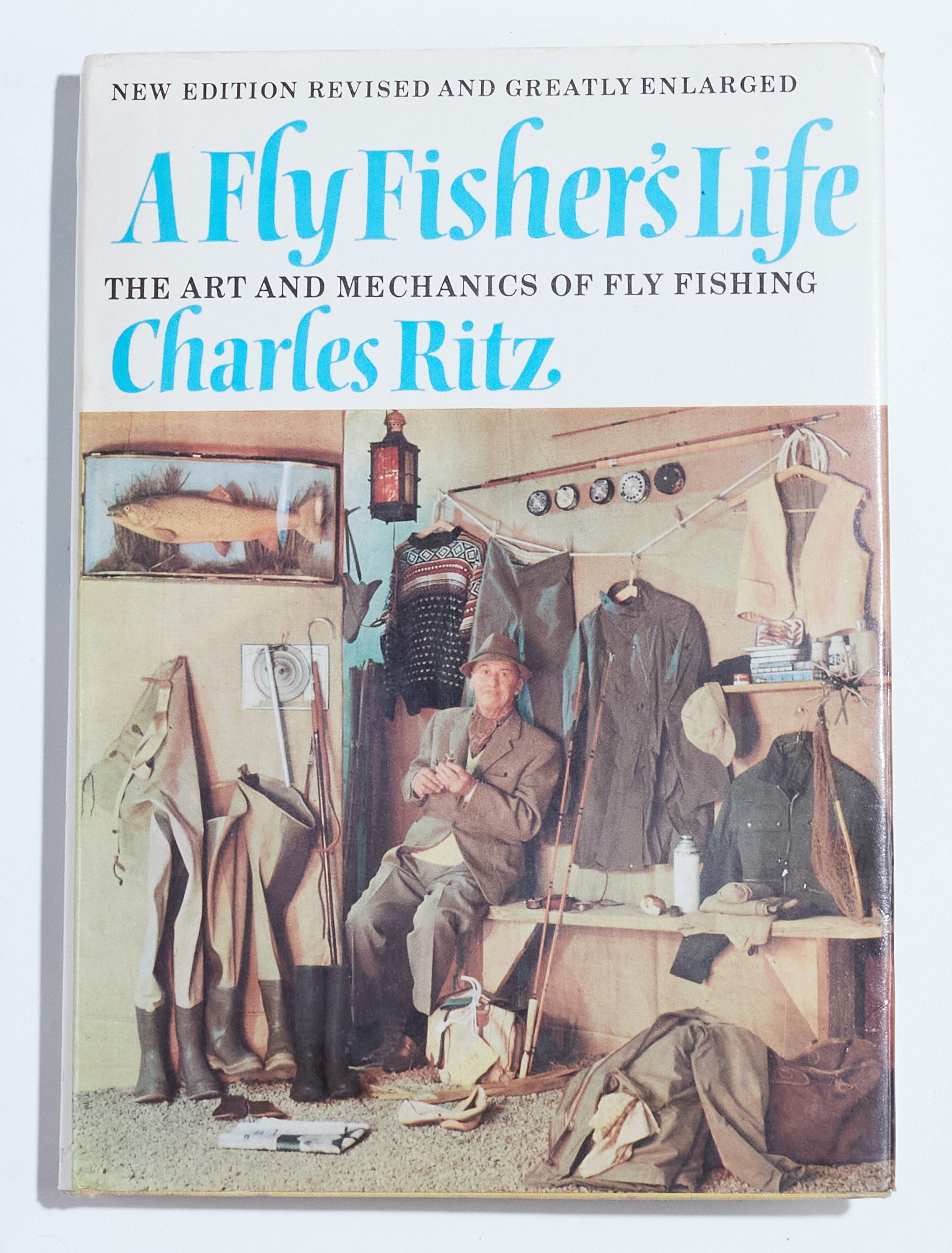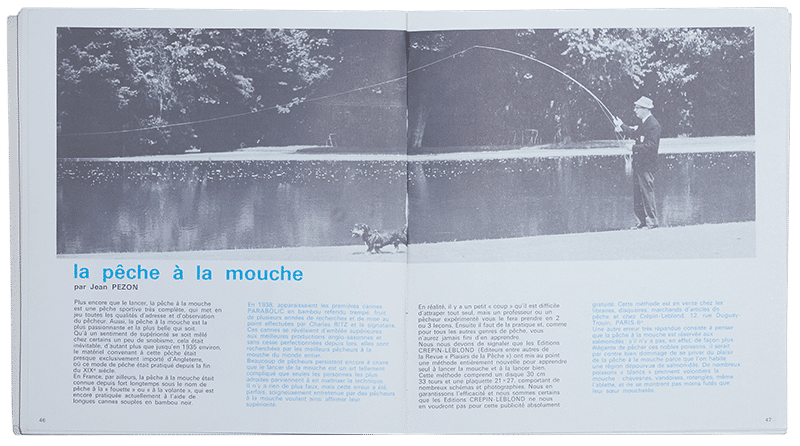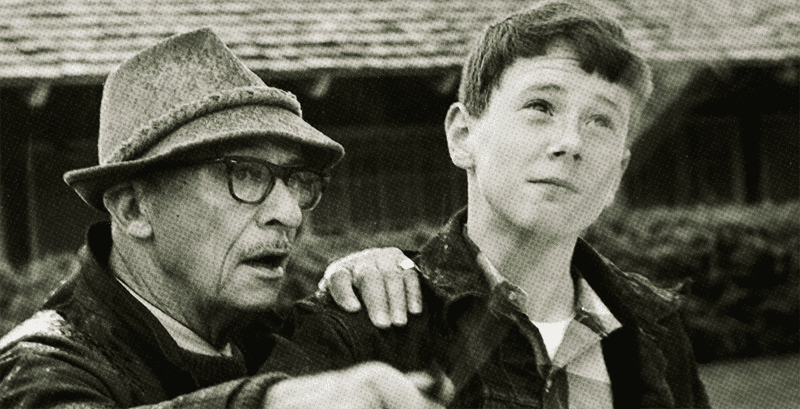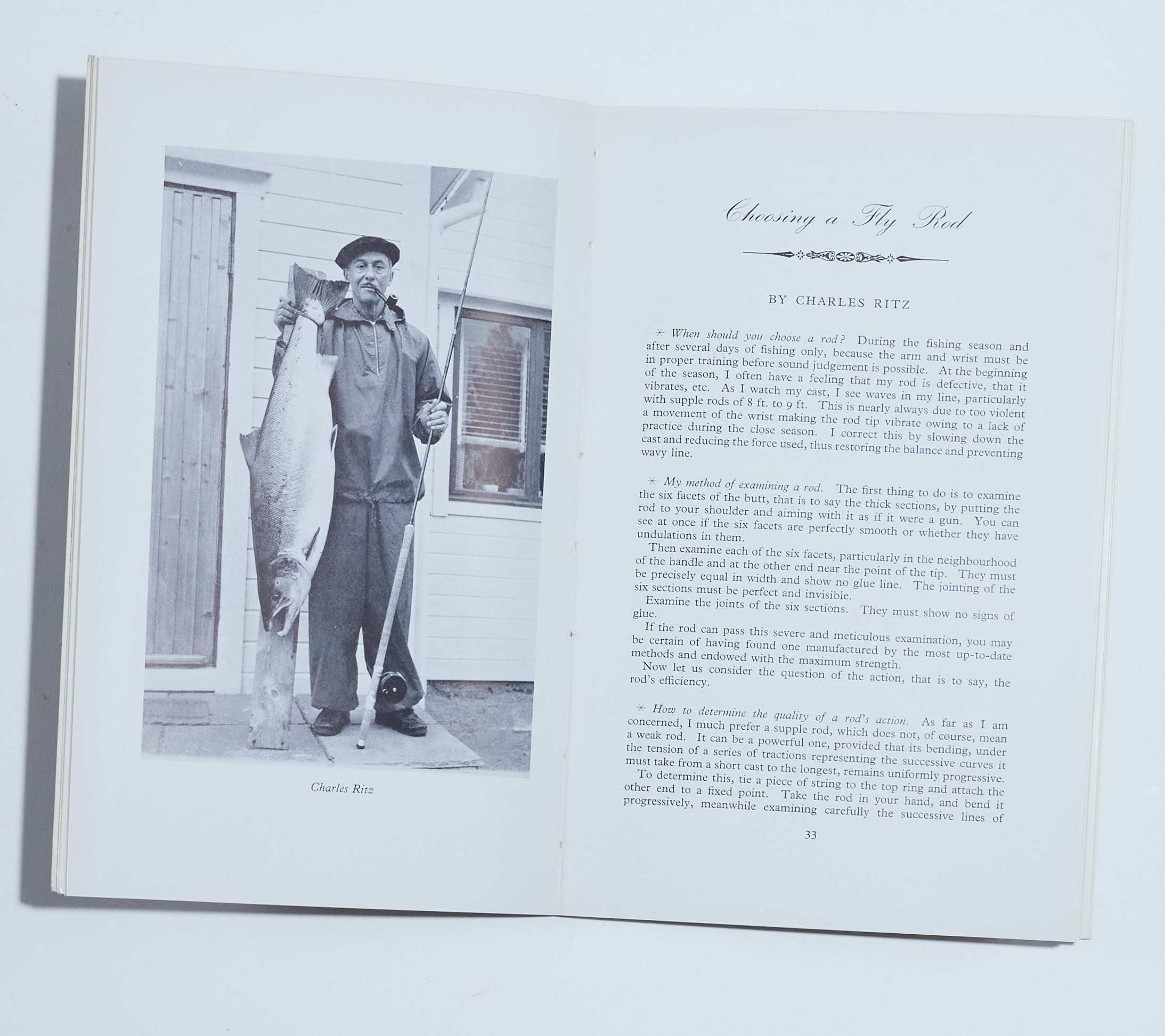
Charles Ritz and fly casting
Charles Ritz and fly casting

All the activity of creation, invention, improvement of the rods is inseparable from the development of his casting technique.
His great pleasure was to demonstrate that anyone, man, woman or child, can after a few hours of practice according to his advice, easily spread fifteen good meters of line. If this seems simple to us today with carbon rods and plastic lines, it is also because Charles Ritz succeeded in demystifying the learning of casting as it was practiced at the time. Let’s remember: at attention, elbow to the body with a book, if possible Halford’s “Précis de la mouche sèche” stuck under the arm… Everything in the wrist according to the British masters…Everything in the arm said Charles Ritz.

Salmon fishing with a one-handed rod, as practiced in Quebec, requires a good caster.

Mr. Charles often fished in the beautiful and pure Austrian rivers.
“No one will be able to fish as well as Mr. Charles.”

The "American" translation of his book "Caught on the Spot", had four successive editions in the United States, two of which were prefaced by Ernest Hemingway. The book was also translated into German and Italian.

Charles Ritz and Ernest Hemingway, at the Place Vendôme hotel.
First of all, it was the HS/HL (High Speed/High Line) casting technique, which the Americans immediately adapted. This technique, made possible by the nervous and fast action of the PPP, was further improved at the end of his life with the IFC method (Instant Fly Casting, which was also a nod to the International Fario Club). This revolutionary method of teaching a complete beginner to cast was based on the instant casting of the rod tip by the caster’s arm. Mitchell Ritz rods were specially developed for this technique, but it was the advent of graphite two years later that allowed for its full development. Today, all American casting schools (there are twenty million fly fishermen in the United States) are still inspired by this method.
Charles Ritz succeeded in demystifying the learning of throwing as it was practiced at the time.

At the age of 70, Charles Ritz effortlessly casts a fly to more than 25 meters on the water of the Bois de Boulogne pigeon shooting club.
If he was a genius inventor and technician, an innate and very talented caster, Charles Ritz was also a fantastic fisherman. Of course, as some have said, it is not surprising that he caught many big fish. At that time, even on the French public rivers, there were beautiful fish and he fished the best and most private rivers in Europe, from Austria to Norway, passing through Scotland and Bavaria.

His revolutionary and easy-to-learn fly casting technique allowed everyone, not only men, to practice this wonderful hobby.

Wearing his famous Tyrolean hat, he teaches a young pitcher to control his line.
Hemingway, who boasted of having liberated the Ritz in August 1944, did him justice on this point. In the preface to the first American edition of “A Fly Fisher’s Life“, papa Ernest, who knew what he was talking about when it came to fly fishing, wrote: “As the world is run now few people can fish as far as Monsieur Charles fishes. No matter how it is run even fewer people could ever fish as well.“

He caught this nearly sixty pound salmon with a 12 foot Parabolic rod he had developed for Pezon & Michel.




